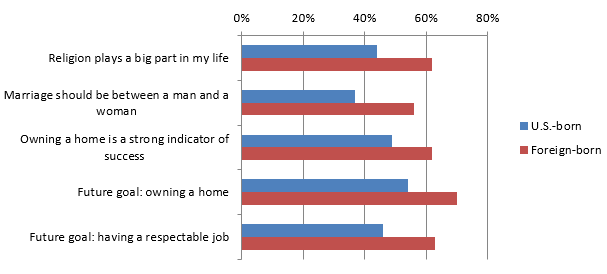Marketing to Hispanic Millennials? They’re not what you think!
ThinkNow Research is proud to be the co-sponsor (along with Sensis) of a new ground-breaking initiative – the Hispanic Millennial Project – that delves into the lifestyle, beliefs and behaviors of 18-34 year old U.S. Hispanic consumers. This unique initiative is divided into five distinct phases over the next 12 months, with this blog post exploring the findings in Phase 1.
Why Hispanic Millennials?
Perhaps no other demographic group holds the potential influence and buying power of this segment of the Hispanic community:
- Millennials make up 25% of the total U.S. Hispanic population.
- Of ALL Millennials nationwide, Hispanics comprise 21%... rising to 23% by 2020.
- Hispanic Millennials already make up the majority of all millennials in cities like Los Angeles, Miami-Ft. Lauderdale and San Antonio.
- Most importantly, this is a group that is growing up and moving into the workforce, starting their careers and growing their significant buying power across the country.
Hispanic Millenials Are a Truly Unique Group
Trying to understand Hispanic Millennials is a little like “herding cats.” They are a unique group when compared to other Hispanic segments… and even amongst themselves, there are dramatic differences in the sub-groups.
For example, when compared to older Hispanics (35-64 years of age):
Hispanic Millennials are more positive in their overall outlook.
- 61% of Hispanic Millennials are satisfied with where they are in life, compared to only 47% for 35-64 year olds
- “My quality of life is better than my parents”… 65% vs. 55%
- On being optimistic about the future… a whopping 70% vs. 49%
Interestingly, they are more aligned with their Hispanic heritage.
- 67% of Hispanic Millennials said they want to stand out as a Latino, compared to 52% for the older group
- On “feeling closer to the Latino culture”… it’s 47% vs. 30%
Hispanic Millennials also differ significantly from Non-Hispanic Millennials…
They are more optimistic.
- 63% of Hispanic Millennials said they were satisfied with the direction of the U.S., compared to just 39% for non-Hispanics.
- On being “extremely optimistic about the future”… it was 70% vs. 52%
- On their belief in the “American Dream”… Hispanic Millennials 71%, non-Hispanic Millennials 55%
And as part of their “American Dream”…
- 48% of Hispanic Millennials have a goal of owning their own business, compared to just 29% for non-Hispanics
- Graduating from college? 46% vs. 31%
- In contrast with Non-Hispanic Millennials, today’s Hispanic Millennials strive for the more traditional markers of success such as owning a home, buying a nice car and going to college.
Where it gets even more interesting is within the group itself – comparing U.S.-born to foreign-born Hispanic Millennials. Across the board, foreign-born millennials seem to have what might be referred to as a more “traditional” or “conservative” belief system.

Why the disparity? We’re not entirely sure… but for those companies that want to connect with Hispanic Millennials, understanding that there are two clear subsets within the group will help with communicating to them.
English or Spanish… or both?
Want to advertise to Hispanic Millennials? Then be prepared to communicate (TV, Radio, Internet, Magazines) in both English and Spanish. According to our study:
- 35% of Hispanic Millennials consume their media mostly or exclusively in English
- 25% in Spanish
- 40% claimed English and Spanish equally
Don’t assume it’s more of the same…
As you can see, U.S. Hispanic Millennials are a “unique bundle!” And they are just now entering the best parts of their careers… their peak earning years. Understanding them, effectively communicating with them and being sensitive to the cultural differences can help you connect with this profitable group.
Please click the link below to download the details of the Hispanic Millennial Project/Phase 1. Future phases will include Healthcare: Behaviors, Motivations and Attitudes; Segmentation; Banking/Financial Services Behavior; and Points of Tension.